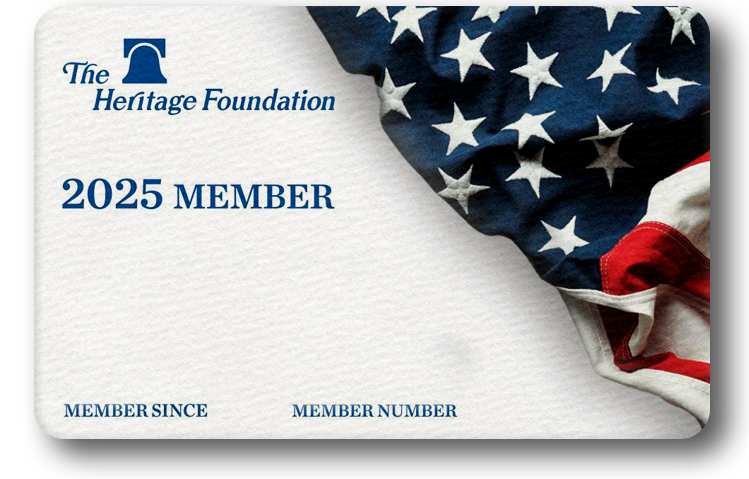The Islamic Republic of Iran has had a nuclear program since the 1950s, with a military dimension beginning in the late 1980s.REF Despite a rumored fatwa, an official prohibition, against nuclear weapons by the “supreme leader,” Tehran’s actions over the past two decades have brought it ever closer to nuclear capability, to the point that it is now weeks—if not days—from breakout. At the same time, Iran’s intercontinental ballistic missile program, the only purpose of which is to deliver a nuclear warhead, proceeds apace.
The United States thus faces three options at this critical junction: (1) do nothing and accept a nuclear Iran, (2) attempt to reach a diplomatic resolution to the problem, or (3) make common cause with Israel and other regional partners to degrade Iran’s nuclear infrastructure through a military strike. The three options come with varying degrees of risk. President Donald Trump’s task is now to navigate among them—and while most Americans would agree that simply tolerating Iran’s nuclear program is intolerable, his options should not be constrained by either those who see only a military option, or those who rule one out.
The Iranian nuclear program commands America’s attention first and foremost because it represents a direct threat to U.S. security. Iran has been, since the 1979 Islamic Revolution, an implacable enemy of the United States. Chants of “Death to America” and “Death to Israel” are not mere political rhetoric targeted at a domestic audience. Supreme Leader Ali Khamenei himself clarified that “‘Death to America!’ is not just a slogan—it is a policy.”REF In pursuit of this policy, Iran has repeatedly attacked American and allied targets, notably the 1983 Marine Barracks bombing in Beirut that cost 241 lives. The Iranian regime is responsible for the deaths of more than 603 Americans in Iraq between 2004 and 2011.REF As recently as January 2024, an Iranian-supported terror group operating in Iraq killed three American service members in a drone strike against Tower 22 in Jordan. This deadly aggression would only increase under a nuclear umbrella aimed at the United States.
Iran has actively deployed increasingly sophisticated weapons systems for decades. This places Iranian nuclear weapons in a different category than, for example, Israel’s presumed capability. The Jewish State is assumed to have had nuclear weapons for more than a half century, which have never been deployed, nor have they prompted the regional nuclear proliferation—a regional nuclear arms race—that would follow an Iranian withdrawal from the Non-Proliferation Treaty in a presumed prelude to demonstrating nuclear capability.REF
In addition, a nuclear Iran would be able to control the flow of energy from the Persian Gulf, the free passage of which has been defined as a vital U.S. national security interest since President Jimmy Carter established his eponymous doctrine in 1980.REF But the reasons why it is such an important American interest are very different some 45 years later. While still vulnerable to the price shock that would be caused by closing the Strait of Hormuz, the United States is no longer in need of these energy exports, having become one of the world’s three largest energy producers in the interim. The bulk of those exports go to Asia, particularly China, which does not have the capability or inclination to ensure their free flow and has been happy to cede that responsibility to America.
If the U.S. continues to provide this protection, it should do so not only to avoid price shocks, but also to demonstrate control over the supply of energy to China from U.S. partners Saudi Arabia, Kuwait, the United Arab Emirates, and Qatar, which would provide significant leverage over China. Given the increasingly close cooperation between Iran and China, Iranian nuclear weapons would effectively evaporate this strategic advantage in the U.S. confrontation with China.REF
Since tolerating a nuclear Iran would thus be a significant blow to U.S. national security, President Trump has prudently pursued a diplomatic solution before considering a military one. This means, however, stepping onto the Iranians’ preferred playing field, and, as the President has pointed out, the Iranians have never lost a negotiation. The track record is not encouraging. President Barack Obama’s Joint Comprehensive Plan of Action (JCPOA) was originally projected to be an end to Iran’s regional aggression and missile programs as well as its nuclear ambitions, but after three years of negotiations it was watered down to an acknowledgement of Iran’s “right” to a domestic nuclear program, including enrichment. The JCPOA merely delayed progress toward the technology required for a weapon and did not materially address any other issues, including Iran’s missile program and support for regional terror groups. President Trump correctly called the JCPOA “the worst deal in history”REF and ceased compliance with it in 2018, the same year that Israel recovered plans for nuclear weapons from the Amad archive in Tehran.
These records proved that the JCPOA was fraudulently negotiated by the Iranians, who had insisted throughout that their nuclear program never had a military dimension, all the while secretly preserving plans for a weapon. This Iranian record of deception must be taken into account during any negotiation.REF
Iran’s main reason for engagement with the Trump Administration appears to be stringing out the clock. Each day gained by Iran is an opportunity to re-build the missile defenses destroyed by Israel last October and to keep enriching uranium and plutonium. So, it is critical to put a hard timeline on the process or Iran will keep it going ad infinitum, or at least until October 25, 2025, when one of the few constructive, if never-employed, provisions of the JCPOA will expire. Until that date it is still possible to re-impose (snap back) the multilateral economic sanctions that were relaxed under that deal.
Led by Special Envoy for the Middle East Steve Witkoff, the U.S. diplomatic team appears to be heading down a different path from their predecessors. The Iranians “cannot have centrifuges. They have to downblend all of their fuel that they have there and send it to a far-away place,” Witkoff said in an interview with Breitbart on May 9.REF “An enrichment program can never exist in the state of Iran ever again. That’s our red line.” The Islamic Republic’s uranium enrichment facilities “have to be dismantled.” Under such terms, a good deal might be possible.
President Trump himself was even more explicit in his speech in Riyadh on May 13, 2025, saying simply: “Iran will never have a nuclear weapon. But with that said, Iran can have a much brighter future, but we’ll never allow America and its allies to be threatened with terrorism or nuclear attack.”REF
If the Trump Administration can expeditiously exact real concessions from the Iranian regime, to include a hard pause on its nuclear program while its full scope is assessed, a full and unambiguous dismantlement of enrichment facilities, a thorough accounting for the potential military dimensions of the program, and a resolution to the missile and regional terrorism issues before any economic relief is offered, there may be a path. It is, however, a steep one and a deal may only be possible if the Iranians believe there is a credible threat of military force that persuades them to give up the nuclear program to preserve their hold on power.
If the President decides that negotiations have proven fruitless, a joint U.S.–Israeli military strike would become more likely. Of course, would be a momentous decision that brings with it a risk of a broader conflict. While that is a legitimate concern, it is by no means the inevitable outcome of an action targeted at Iran’s nuclear facilities. In fact, history indicates that limited strikes on rogue nuclear programs do not result in war: in 1981 and 2007, for example, Israel executed successful targeted strikes on both Iraq’s and Syria’s nuclear programs without igniting regional conflicts.
From President Ronald Reagan’s devastating Operation Praying Mantis in 1988 to President Trump’s bold order to eliminate Quds Force commander Qasam Soliemani in 2020 to Israel’s effective missile strikes directly against Iran in 2024 (the second of which decimated Iran’s missile defenses), Iran’s responses to decisive military action have been impotent. Today, Tehran has few retaliatory options, as Israel has significantly degraded Hamas and decapitated Hezbollah, the Islamic Revolutionary Guard Corps has lost its foothold in Syria, and the Trump Administration has degraded the Houthis, a campaign that Israel is continuing.
Between the United States and Israel, there are sufficient capabilities to not only execute a strike that would effectively end Iran’s nuclear program without significant civilian casualties, but also to deter significant retaliation. The Obama-era talking point that the only alternative to a JCPOA-style deal is a nuclear world war is not, in fact, the only choice. Thanks to Israel’s effective bombing strike last October in response to an Iranian attack, Iran is as weak and vulnerable as it has ever been, and painfully aware of Israel’s ability to strike at will, an ability that would only become more effective with American participation.
President Trump has already assembled significant American assets in the region that would likely deter an escalatory Iranian response by demonstrating vastly superior capabilities. Should Tehran, for example, attempt another attack on Saudi Arabia’s energy infrastructure, the U.S. and Israel could easily destroy Iran’s Kharg Island’s oil terminal, which processes 90 percent of its oil exports, fatally crippling its economy and threatening the regime’s hold on the country. The Iranian regime knows this and would hardly risk its own survival even for its nuclear program.
All those who want to minimize the possibility of war should support President Trump’s effort to make a deal with Iran that prevents that implacably hostile regime from obtaining a nuclear weapon. There is a strong case to be made, however, that if these negotiations fail, rather than igniting an uncontrollable regional war, a targeted strike on Iran’s nuclear facilities could end the threat that has been gathering for 25 years and menaces not only America and Israel, but also U.S. regional Arab partners and threatens the global economy. Given the significant degradation that has been caused to the Iranian regional proxies Hamas, Hezbollah, and the Houthis over the past year and a half without causing a broader conflict, action against Iran’s nuclear capabilities may have a similar outcome, while neutralizing a major national security threat to the United States.
In dealing with this grave dilemma, President Trump needs all tools at his disposal, and his options should not be constrained by either those who see only a military option, or those who rule one out. Peace through strength does not mean rushing to war, nor does it mean a deal at any cost. The key will be to effectively enforce President Trump’s redline that Iran cannot have a nuclear weapon by whatever means he chooses.
Victoria Coates is Vice President of the Kathryn and Shelby Cullom Davis Institute for National Security and Foreign Policy at The Heritage Foundation. Robert Greenway is Director of the Douglas and Sarah Allison Center for National Security at The Heritage Foundation.




